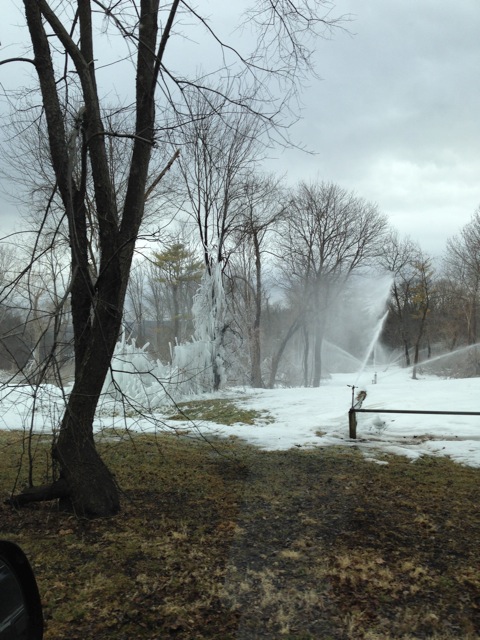Understanding the fate and transport of agrochemicals is essential for predicting impacts to aquatic ecosystems and for developing appropriate best management practices to improve and protect water quality.
Our research takes a multi-pronged approach to studying the fate and transport of contaminants in the environment:
- Field studies are conducted to understand how hydrologic and biogeochemical factors affect the fate and transport of agrochemicals.
The land-application of manure, biosolids, and wastewater treatment plant effluent introduces a wide range of novel contaminants, known as "emerging contaminants" into the environment. We seek to understand how coupled hydrologic and biogeochemical processes influence fate and transport by conducting detailed field studies. Our current study assesses the fate and transport of hormones at Penn State's Living Filter (which is irrigated with effluent from the University's wastewater treatment plant) and field plots at Rock Springs Agronomy Farm (which receive dairy manure applications). Specifically, we are seeking to understand the role of winter transport at the Living Filter and the importance of "hot events" to hormone transport at Rock Springs.

Spray irrigation of wastewater effluent at Penn State's Living Filter in March 2014.

Surface runoff samples are collected from equipment inside the huts at Penn State's Agricultural Research Farm, Rock Springs.
- Interdisciplinary research teams study the water quality of sensitive aquatic ecosystems and assess potential impacts on sensitive aquatic species.
Presently we are conducting research at vernal pools that are impacted by nearby agricultural activities. Our project is focused on the presence of emerging contaminants in these ponds, as many are known or suspected endocrine disrupting compounds. Vernal pools provide critical breeding habitat for native amphibians, such as the wood frog, that may be negative impacted by the presence of emerging contaminants, even at trace concentrations (μg - ng/L).

Photo credit: Dr. Tracy Langkilde

Photo credit: Dr. Tracy Langkilde

- Field study results are used to develop models and decision-making tools.
We are currently developing models to simulate the fate and transport of emerging contaminants based on the results of our detailed field studies. These models include decision-making components, which allow "what if" scenarios to be run. Our goal is to turn our models into user-friendly decision-making tools for land managers.


